-
Posts
6,424 -
Joined
-
Last visited
Content Type
Profiles
Forums
Store
Help Articles
Posts posted by Richard Kilgore
-
-
Finally saw some really small gaiwans yesterday at Wing Hop Fung. The smaller standard ones like those I already have hold between 2 and 3 ounces; these smaller ones came with travel tea kits including a small padded zippered case, 4 impossibly tiny teacups holding maybe 15-20 mL, and the gaiwans looked to hold about 40mL. They didn't have separate bases for the gaiwans.
These are the size I was looking for for comparative tastings of oolongs or puerhs where I want to sample many infusions of 2-4 teas at a time, but it feels very wasteful to buy the whole travel kit (admittedly cheap enough at $10.99) when I just want the little gaiwans. In time, if I don't find another source, I'll probably cave in and buy a couple of sets of them. Maybe I'd be able to give the cups to someone whose doll could use them....
That's an interesting option, but since you have some that hold 2 ounces, they aren't that great an advantage. Plus some leaf styles are going to be too big to fit when dry without breaking in a 40 ml gaiwan. But do take pics if you get a set or two.
-
I love Tater Tots, with ketchup.
Ohhh, I forgot about those. Tater Tots with lots of ketchup. And if some of that ketchup accidentally oozes on to my steak, I am happy (ashamed but happy).
Where's the shame? I yam proud to love tatter tots!
-
I think that I still have a small amount of two of these three teas from my last Norbu order.
I am really looking forward to everyone's tasting notes on these teas.
Do join in, LuckyGirl!
-
More information on Shui Jin Gui, the second tea in this three Wuyi Oolong Tea Tasting & Discussion. From the norbutea.com site and used with permission.
Shui Jin Gui (English: Golden Water Tortoise) is one of the 5 most famous cultivars or varietals from the great category of oolong known as "Wu Yi Yen Cha," or Wu Yi Rock Tea. It was hand harvested and processed during the Spring season of 2009 in the Wu Yi Shan National Scenic Area of Northwest Fujian Province.Cultivar History:
As with other Wu Yi cultivars, cuttings from the originally found "wild" Shui Jin Gui plants (of which 3 are supposedly still alive but not harvested) were taken and grafted onto existing rootstock, creating exact copies/clones of the original plants that could be grown and harvested in more accessible parts of the the Wuyishan area.
Dry Leaf:
This tea's dry leaves are the long and twisting shape and dark greenish red-brown color characteristic of traditional Wu Yi Yen Cha. The fragrance of the dry leaves is roasty-toasty with hints of toasted nuts and maybe a touch of cocoa.
Roast:
This is a traditionally roasted or "fully" roasted Oolong, which serves the practical purpose of killing or deactivating any remaining oxidizing enzymes left in the leaves after they have been bruised and allowed to partially oxidize, creating the basis for the complex flavors in the finished tea. This roasting process traditionally happens using glowing (not flaming) charcoal covered with rice ash to prevent flame ups, but larger/more modern/less traditional factories use electric ovens for consistency and to prevent the accidental introduction of smoky tastes into the leaves. To use an example from western cooking, much in the same way as searing a piece of meat prior to cooking "browns" or caramelizes the proteins on the surface of the meat (the Maillard reaction) and creates complexities of flavor in the finished dish, this traditional roasting process caramelizes or "browns" the proteins in the surface of the tea leaves, creating an amazing layer of roasted/toasted richness & complexity in the flavor of the final product.
Flavor & Aroma:
The flavor of the infused tea liquor is quite rich and assertive with dried stone fruit (peaches, plums, etc) overtones and hints of roasted cocoa in the finish. While this is a stronger roast than some of our other Wu Yi rock teas, the caramelized/roasted notes do not overpower the subtleties in the many layers of flavor, and bittersweet aftertaste (Hui Gan) is fruity, assertive and lingers nicely on the palate.
-
-
Brewing the aged TGY (1990s) from norbutea.com thanks to WC reminding me of it. Brewed in a Yixing made of 70s-80s clay. 7 g: 100-120 ml in this 170 ml teapot. The temp gradually increased over the first three infusions - 195, 205 210 F. Enjoying the third the best so far: fuller, richer and better balance between the roasty and fruity flavors. More to go.
Brewed this aged TGY again today in a 90 ml Yixing made of Qing Shui Ni clay using the same brewing parameters on the first three infusions and the result was thinner and less fruity. This pot has had less use and thus less seasoning, so that may have something to do with it, or it may not be the best match for this tea. So next I'll brew in a porcelain gaiwan and see what happens.
I have now brewed the aged TGY from norbutea.com in a 100 ml porcelain gaiwan using the same brewing parameters. Not as good as with the Yixing made of 70's-80's clay, but delicious and much better than with the Yixing made with recent Qing Shui Ni. Using the gaiwan the fruitiness comes through and the balance is good between that and the baked flavor. Whatever its future may be, the Qing Shui Ni is sucking the fruitiness out at this point. (That actually may be a good sign. More on that as this pot seasons from use.)
Clarification: in the Qing Shui Ni Yixing and the gaiwan, I brewed all infusions at 205, not in the graduated steps I used in the first Yixing. The hotter temp really brings out this tea. I may need to try it closer to 212 F just to see what happens.
-
Actually, Tony, your water comes from a lake just up the road. I have been using a Britta pitcher and it does a good job for my taste buds, but I have not tried anything else. Next time I run out of filters, I may try a Pur.
You may want to consider one of the solutions up topic, particularly the Berkey recommended by andiesenji. If I was going to go to something more serious, it would be the travel version, since I could, well, camp and travel with it, as well as use it on the counter.
-
Must have been an Assam Saturday, Jeff. I also had an Assam Konghea Estate, Golden Bud from Tea Source. Very nice!
Today started with an enjoyable Puttabong Estate first flush Darjeeling from The Cultured Cup.
Then continued with some experiments brewing the Aged TGY from norbutea.com in alternative tea pots. See the Oolong topic for more on this.
-
Brewing the aged TGY (1990s) from norbutea.com thanks to WC reminding me of it. Brewed in a Yixing made of 70s-80s clay. 7 g: 100-120 ml in this 170 ml teapot. The temp gradually increased over the first three infusions - 195, 205 210 F. Enjoying the third the best so far: fuller, richer and better balance between the roasty and fruity flavors. More to go.
Brewed this aged TGY again today in a 90 ml Yixing made of Qing Shui Ni clay using the same brewing parameters on the first three infusions and the result was thinner and less fruity. This pot has had less use and thus less seasoning, so that may have something to do with it, or it may not be the best match for this tea. So next I'll brew in a porcelain gaiwan and see what happens.
-
Does the "thousand mile fragrant" name refer to how far away the aroma carries, or is there more of a story to it?
-
My teaware is far more pedestrian than the beautiful pieces in this topic. (Aside from my gaiwan, which I mainly like to look at) I use a plain white porcelain Muji teapot with inset mesh infuser for all of my teas - oolongs, mugichas, nokchas - the lot. I prefer drinking from a Japanese-style teacup (yunomi), and have a small collection - my every day ones, which are also from Muji and match my dishes, but a couple of handmade ones from local potters as well. They're good for warming up your hands this time of year.
I also have two tea caddies - a stainless steel one for Japanese teas, and a porcelain one I bought from a housewares design shop in Shanghai. Neither are particularly traditional, but I do like the way they look on my kitchen counter!
I would really be interested in seeing pics of all of these when you have time, Erin.
-
How do you clean & store your chasen? The container it came in is hard plastic and
mostly airtight....seems like an invitation to mold.
I have simply been rinsing mine out well, letting it stand on end and air dry as long as practical and then storing in in the plastic sleeve - handle down - with the lid off. So far this seems to work okay as far as mold prevention goes. But on my next order, I am going to get a kusenaoshi (whisk keeper) from Dan at yuuki-cha.com. These doo-dads are designed to help the chasen maintain its shape longer.
-
If it is a tall or round shape kyusu you can try filling it about 80% full max; if it is a flatter shape, you can try filling it about 60% max. That's the usual recommendation.
-
Fukamushi is typically sweet and with little or no astringency, so even with your sensitive astringency detectors you may be able to handle a usual leaf:water ratio (.6 g per ounce) and closer to usual steeping times. Worth experimenting anyway.
Can you clarify how much water you are using, WC? Is that 6 ounces (180 ml) when the kyusu is filled about 75 - 80%, or do you mean something else?
-
I have had five infusions of the aged 90's TGY and will continue with it tomorrow since it is holding up well.
Also brewed a small pot of the Ceylon Vithanakanda Estate, Extra Special from Tea Source. A lovely, complex tea.
-
I made the Catalan Estifado of wild boar, except that even though we're inundated with wild boar here, I couldn't get any when I needed it, so I used beef. The only other thing I changed was that I cooked it over a three day period, chilling and reheating, as so many of Paula's recipes suggest. When I put it on the table for French guests without saying what it was, the first one to take a bite said "oh good, boar." It's a succulent dish, and I froze the leftovers which were just as good two weeks later.
So even if you can't get boar, don't hesitate to make this one. I used paleron of beef, which is a very lean cut that eventually shreds into filaments - I'm not sure what the US equivalent would be. But you want a meat that's pretty lean and pretty tough, to be as much like boar as possible.
We have lots of wild boar running amuck in Texas, but I don't think I am going to be able to chase one down this winter. From your description, it sounds like flank steak may work for beef, or then a high quality pork, of course.
-
Never made it, but I love C&D. I'm in.
So how do you all make the dumplings for this?
-
-
Brewing the aged TGY (1990s) from norbutea.com thanks to WC reminding me of it. Brewed in a Yixing made of 70s-80s clay. 7 g: 100-120 ml in this 170 ml teapot. The temp gradually increased over the first three infusions - 195, 205 210 F. Enjoying the third the best so far: fuller, richer and better balance between the roasty and fruity flavors. More to go.
-
Starting the day with the aged TGY (1990s) from norbutea.com thanks to WC reminding me of it. More in the Oolong topic.
-
-
Ate at a Szechuan Chinese restaurant with friends last night and was served the usual insipid green tea bag pot of flat, flavorless tea. But the food was terrific, so next time I may ask if I can provide the leaves.
A comparatively slow, but good day for tea today. Brewed a pot of Organic Uji Tokusen Sencha from yuuki-cha.com, in a Nasu Banko Yaki Kyusu, and have been sipping it from a rough sand Hagi teacup.
So what teas are you drinking in your part of the tea drinking world?
-
It's been a few weeks since I have brewed this, WC. I agree that it's an interesting tea, and a little different than the other aged Oolongs I have had. Don't know if I have any notes, but recall that I brewed it in the 195 - 205 range and that it responds well to good Yixing clay. I'll have to brew it at different temps, different leaf:water ratios and different Yixings and see what happens.
-
Pork and Chicken Tourte from Languedoc
I am a sucker for rustic pies, tarts or pizzas, so the tourte on page 250 immediately stood out. A dough made with lard and a filling of pork chicken and pancetta. I could not wait to give this a shot. Due to my travel schedule, I actually had to make all the components, including the terra cotta dish with the dough already rolled in it, and freeze them (I did not freeze the onions/porcini mixture though). When it was time to bake I assembled everything and popped it in the oven. I did make an opening in the top crust, but did not put in a small funnel. In hindsight maybe I should've.
*******************************
The tourte was delicious, fragrant and savory. The flavor of thyme, pork and porcini was wonderful. The crust was simply perfect, flaky, tender and very easy to work with. The filling was a bit too wet and I'm thinking the small funnel might've helped with that. I do think when I do this again, I will use boneless skinless chicken thighs as opposed to breast pieces. I like them better and I think they are much less prone to drying out.
Looks delicious, Elie. I wonder if a second baking stone below the tourte would provide more heat from the bottom that could help with the little bit of excess moisture.



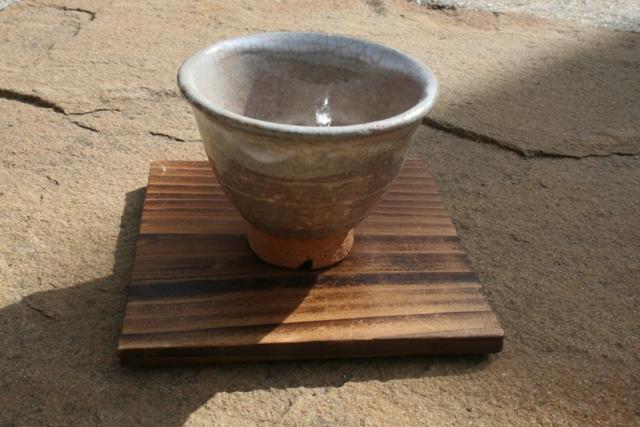
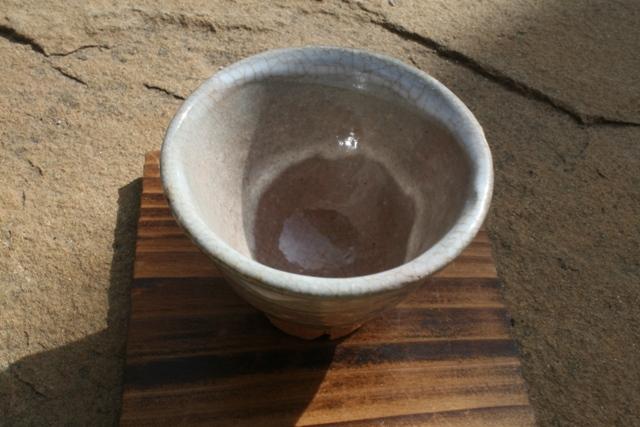
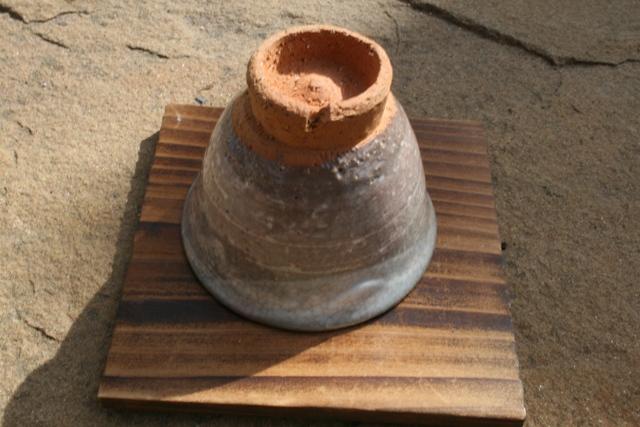
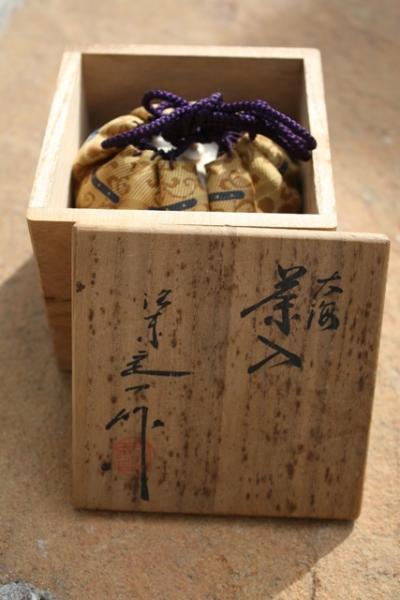
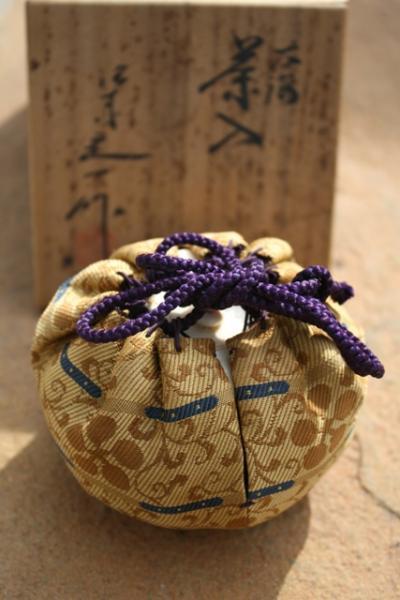
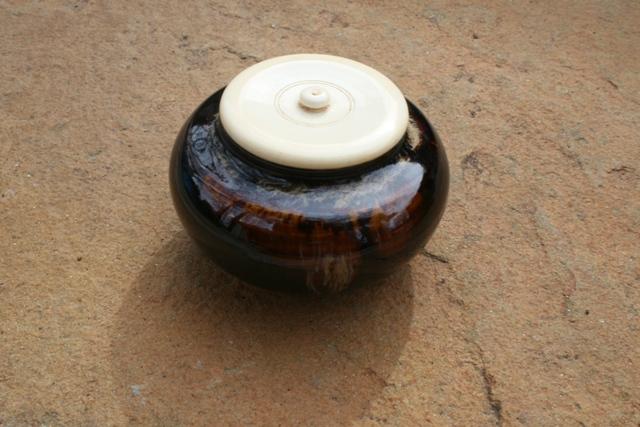
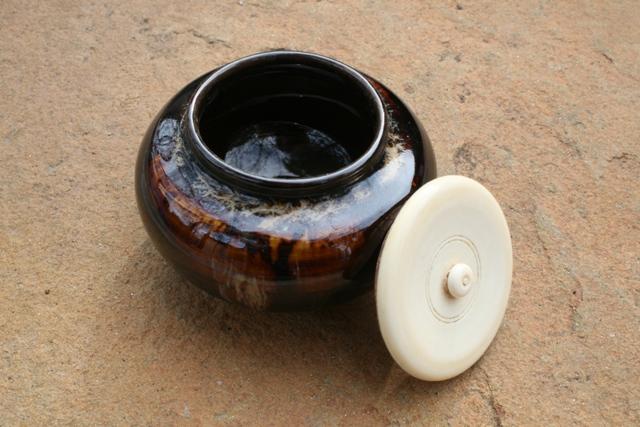

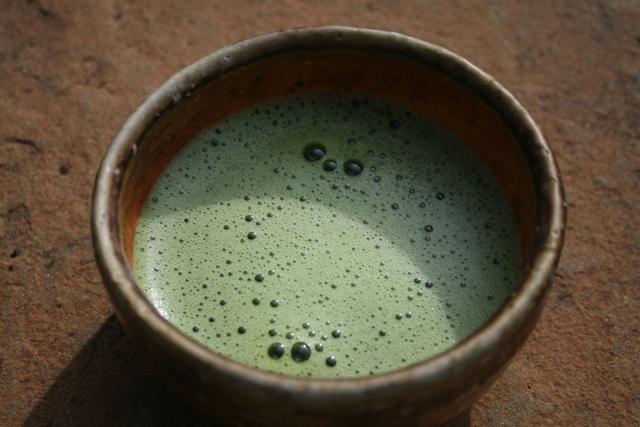
What Tea Are You Drinking Today? (Part 2)
in Coffee & Tea
Posted
Started the day with the fine Vithanakanda Estate, Extra Special Ceylon tea from Tea Source. Followed by a couple of infusions of the aged TGY from Norbu Tea that I started yesterday.